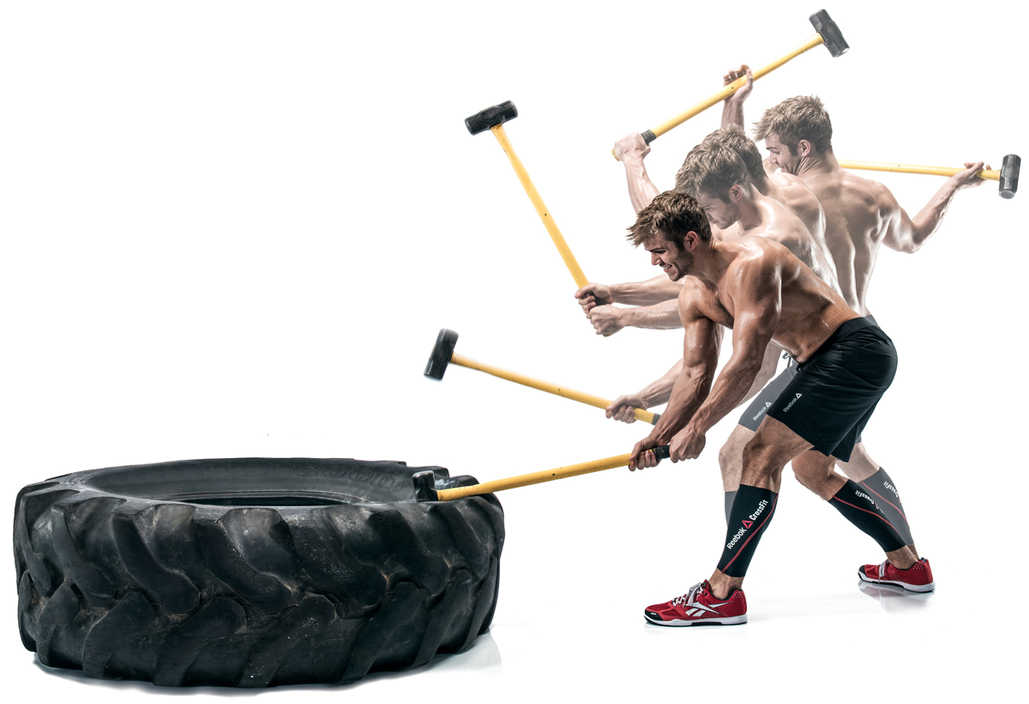There are people who are strong enough for the weight room, but there are also people who are strong enough for anything, if you've ever spoken to someone who has been working out for years, if not decades.
Many people possess the "brute strength" required to carry large, heavy, or awkward loads devoid of aid or leverage; if you want to determine your level of strength, try to imitate their feats; it's a test of your stamina and strength unlike any other.
This physical strength is simply pure, animalistic strength that comes to you without thinking and is available to you at any time, according to Robert Herbst, a coach, personal trainer, and 18-time world's best power lifter.
That kind of strength allows you to respond immediately when your wife calls to tell you that she accidentally tucked something under the oven.
Even though some people are blessed with it, that doesn't mean you shouldn't work to improve it or achieve it. You can accomplish anything with the appropriate fitness regimen, including this.
There must be brute strength, but you can't stop after just one repetition; you need to be able to perform more.
When humans and mammoths coexisted, each person would carry a piece of the mammoth back to the camp or cave after it had been slain and dismembered. In terms of our ancestry, that is how we acquired our brute power.
Although you can exercise it now, you cannot simply begin with the highest weight and then anticipate becoming and becoming strong. Like anything else, you need to start out a little lighter, with low weight and high reps, which means you should perform six to twelve repetitions of each exercise to perfect your form.
Your form will deteriorate as you lift more weight, so you must perfect it before beginning a strenuous workout.
After that, you must begin with approximately five reps at 65-75 percent of your maximum capacity and train for up to eight sets with a minute of rest in between each session in order to increase your strength endurance.
You will have a strong base and good form if you continue doing that for a total of six weeks. After that, you'll quickly become quite strong, but to do so, you'll need to employ single, double, or even triple sets of weights that are nearly as heavy as your maximum.
To ensure that you can finish all of your sets, take a good 10-minute break between sets and exercises to ensure that you are at least 90% of your maximum strength.
If you want to add more raw strength to your body and expand your range of motion, there are a few things you may incorporate into your strength training regimen.
Keep in mind that forcing your body to accept the new software you gave it won't be a walk in the park; it will actually be quite unpleasant. It won't be simple, but if you want to be very strong, you've had to grit your teeth and clench your fists.
After your workout, you will need to take some time to recover (up to two weeks) before your strength starts to take hold. When you retry, you'll be considerably stronger. These are the seven elements you can use in your programme to strengthen your body physically.
CONVENTIONAL DEADLIFT
You're stretching the boundaries of your actual strength when you perform conventional deadlifts. When you pick up as much weight off the ground as you can, this occurs.
To avoid shifting your centre of gravity or exerting too much stress on your lower back, which could cause it to strain, you should try to maintain the bar as near to your legs as you can while lifting.
If you know any experienced deadlifters, they've probably told you that a decent deadlift should leave your shins bleeding from the bar running across them. This is why you tape your legs: to prevent bleeding all over the gym.
To guarantee proper form when lifting, your feet should have their insteps directly beneath the bar and their toes slightly pointing out.
Your knees should be soft and your arms should be straight. After straightening your arms, bend forward into a half-squat to enable you to reach the bar on the floor while maintaining a straight back. Brace your abs, shorten the bar so that it no longer touches the plates, and flex your lats as forcefully as you can.
To lift, firmly plant your feet on the ground while you raise the bar along your shins. Once the bar has passed your knees, carefully drive your hips forward.
You can perform a deadlift by clenching your glutes at the bar's highest positions. Slowly lower it so it won't bounce, set it down, take a break, and then repeat when you're ready.
DEEP BARBELL SQUAT
When they witness someone using a lot of weight on the bar and then performing a nosebleed squat, real strongmen will laugh it off.
Because it is far higher than a normal squat, it is known as a nosebleed squat. Anyhow, if you try to utilise the lower beginning altitude that a deep barbell squat affords you with the more space to go, you will fare much better when trying to develop and strengthen the strength in your hamstrings and glutes.
Since your hips will be lower than your knees as a result, you must begin the squat with your legs slightly wider than shoulder width and your toes pointing slightly outwards.
Put the bar on your shoulder blades to perform a standard low-bar powerlifting squat; but, if you want to perform a high-bar squat, you need place the bar a little higher, on the small shelf your trapezoid muscles have produced.
Creating large traps takes a lot of work with farmer's walks and deadlifts, but you'll get there. Like when you're sitting down and your knees are straight out in front of you, lower your body as much as you can.
When you're at the bottom, flex your leg muscles and try to stand up; you'll need to propel your hips forward and maintain an upright posture all throughout.
BARBELL BENCH PRESS
The barbell bench press is an excellent exercise to do if you want to gain greater strength and chest muscles. Put your feet firmly on the ground while you lift to practise getting drive from your legs, which you'll need to be able to do.
Additionally, you must hold the bar with a grip that is broader than your shoulder width and pull your shoulder blades together as tightly as you can, as if you were the only thing preventing the bar from collapsing so that it bends on both sides.
Additionally, maintain an arched back so that your behind always touches the bench surface. As you drop the barbell, squeeze the bar and tuck your elbows to begin the lift.
Bring it to the level of your solar plexus, then blow it back up and slightly in the direction of your head until it is level with your chin.
For the best lifting results, aim to stretch your hands as widely as you can, as if you were ripping the barbell in half.
BARBELL SHOULDER PRESS
The military press is the name given to this one. Many people I've observed doing this while seated because they believe they can lift more when seated are mistaken.
You must perform this exercise while standing straight up, just like in the military when you are at attention. Sitting while this workout puts a lot of pressure on your spinal discs, making it much easier for you to injure yourself.
To prevent your lower back from arching when you don't want it to, you should be standing with your feet at shoulder width apart, or staggered with one foot in front of the other.
If you do this, be careful to alter your stances between each set; switching your legs will have the greatest impact. For the best lift, lower the barbell to your collarbone; for a medium-difficult lift, lower it to your chin; and for an easy lift, lower it to the middle of your face.
Your shoulders won't be as pressured and you'll be able to do more if you merely raise the bar up to your midface.
BENT OVER BARBELL ROW
Because they work the back and the core, bent-over rows are great for building all kinds of strength. In order to perform this exercise with excellent form, you must adjust your body position in relation to the weight you are lifting.
This indicates that you should only bend your body to a maximum of 45 degrees when lifting big weight, as opposed to 90 degrees when performing repetitions with a little amount of weight.
Additionally, you may adjust the width of your grip as needed to evenly target all of your lats. Even while your form should be as rigid as possible, you can't just pop the weight up, hence your movement pattern should be more elaborate.
Only very heavy weights that are nearly at your maximum can be used in this manner; jerk the weights up to give them momentum before continuing the lift.
FARMER’S CARRY
Because of, well, how farmers carry stuff, this one is known as the "farmer's carry." You perform a farmer's walk when you want to test your core strength, your ability to distribute force, and your raw power.
Starting with as much weight as you can manage to carry for 50 feet, increase the weight each time you perform them.
Additionally, you can simply start walking as far as you can while carrying a heavy beginning weight of about 200 pounds. The next time, take longer walks and, if you can do this outside, add more challenging terrain by climbing hills.
Your first weight should typically be about half of your maximum deadlift. If you can deadlift 300 pounds, you will need 150 pounds for a farmer's walk, which equates to 75 pounds in each hand and 37.5 pounds on either side of a barbell.
You will begin to develop incredible strength once you take them up and begin to move, but first you must increase the initial weight until it is equal to your body weight in each hand.
Additionally, you will need to clench your abs firmly, as if someone were about to hit them, and maintain control of your upper back because your spine will be under a lot of stress.
HITTING WITH A SLEDGEHAMMER
If you want to develop incredible brute strength, there aren't many things you can do besides wrestle bears in the mountains. The typical domestic chores of cutting wood or whacking things with a sledgehammer are among them.
You should, however, pay close attention to your form while performing this exercise until you get it down. This means that you must move the hand that is closest to the axe head away from it and toward your other hand as you swing the axe or sledgehammer over your head.
When you make this action, your axe will be swinging at its fullest, and at the conclusion, both of your hands will be on the handle and touching. Bring the axe down; you'll be surprised at how readily the wood splits if you've never cut wood this way before.
When you start to swing again, you will need to put your top hand in the same position again, near the axe head. Repeat until you have enough wood to last the entire cold season, and then chop even more wood and give it to your family and close ones.
Additionally, move that wood to the shed and store it there. Your overall strength will increase once you've spent hours pushing a wheelbarrow loaded with wood.
If you are in a city or another area where you don't require chopped wood, purchase a sizable tractor tyre and whack it as hard as you can with an eight-pound sledgehammer until your neighbours come knocking at your door to investigate the noise. In conclusion, simply bashing things with an axe or hammer until you become strong enough to complete the task without them.







Comments
Post a Comment